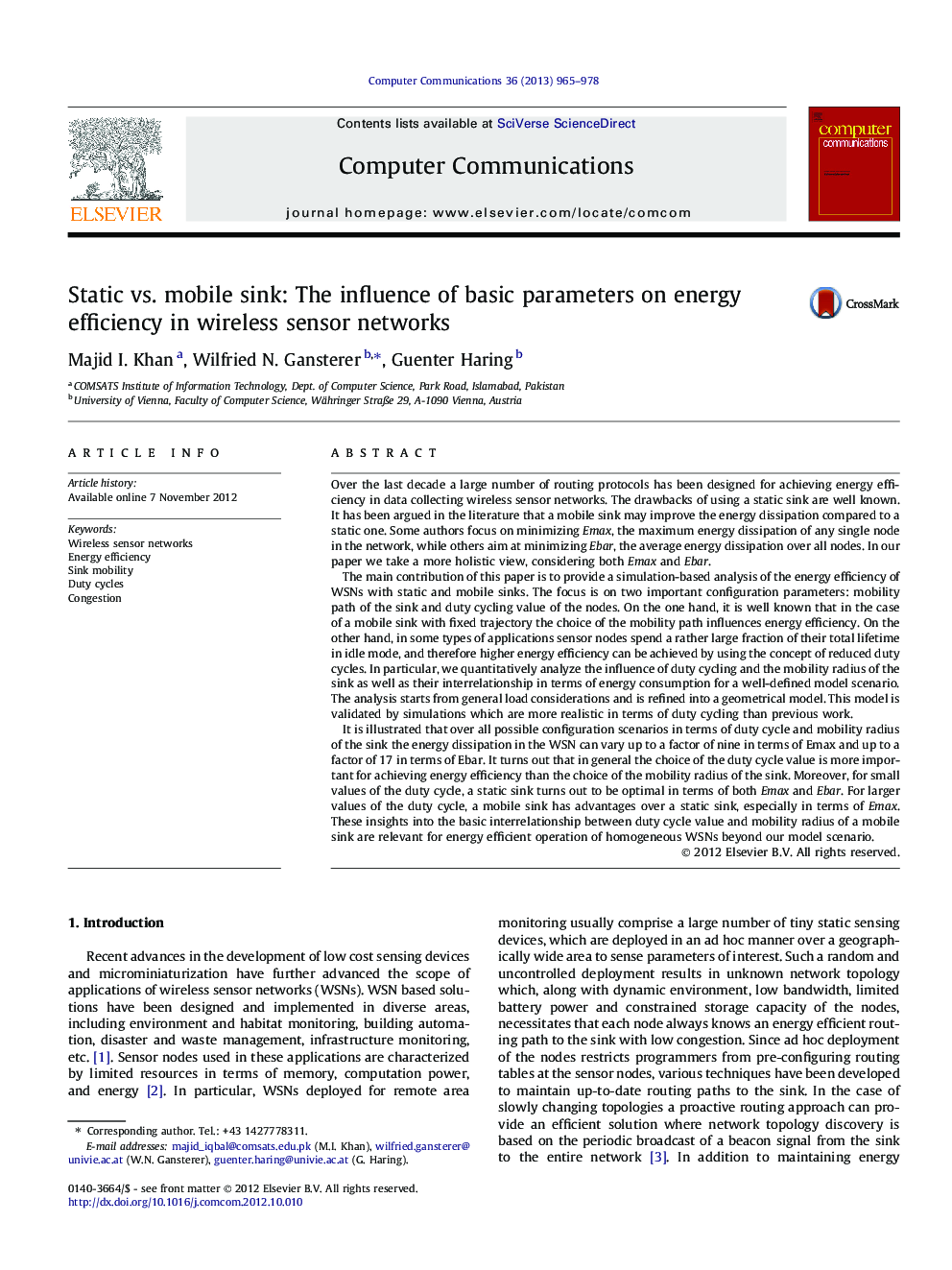| Article ID | Journal | Published Year | Pages | File Type |
|---|---|---|---|---|
| 10338311 | Computer Communications | 2013 | 14 Pages |
Abstract
It is illustrated that over all possible configuration scenarios in terms of duty cycle and mobility radius of the sink the energy dissipation in the WSN can vary up to a factor of nine in terms of Emax and up to a factor of 17 in terms of Ebar. It turns out that in general the choice of the duty cycle value is more important for achieving energy efficiency than the choice of the mobility radius of the sink. Moreover, for small values of the duty cycle, a static sink turns out to be optimal in terms of both Emax and Ebar. For larger values of the duty cycle, a mobile sink has advantages over a static sink, especially in terms of Emax. These insights into the basic interrelationship between duty cycle value and mobility radius of a mobile sink are relevant for energy efficient operation of homogeneous WSNs beyond our model scenario.
Related Topics
Physical Sciences and Engineering
Computer Science
Computer Networks and Communications
Authors
Majid I. Khan, Wilfried N. Gansterer, Guenter Haring,
